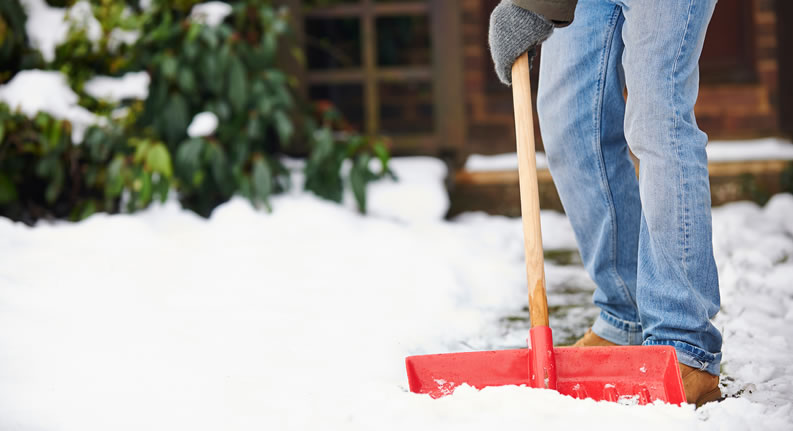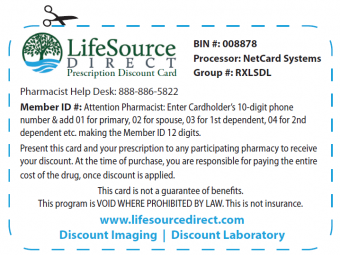With all the extreme weather this year, we seen heavy snowfall and extreme cold can immobilize an entire region. Even areas that normally experience mild winters can be hit with a major snowstorm or extreme cold. The impacts include flooding, storm surge, closed highways, blocked roads, downed power lines and hypothermia.
You can protect yourself and your household from the many hazards of winter by planning ahead.
What to do before a winter storm threatens
- Know the terms used by weather forecasters:
- Freezing rain – Rain that freezes when it hits the ground, creating a coating of ice on roads, walkways, trees and power lines.
- Sleet – Rain that turns to ice pellets before reaching the ground. Sleet also causes moisture on roads to freeze and become slippery.
- Winter Storm Watch – A winter storm is possible in your area.
- Winter Storm Warning – A winter storm is occurring, or will soon occur in your area.
- Blizzard Warning – Sustained winds or frequent gusts to 35 miles-perhour or greater and considerable amounts of falling or blowing snow (reducing visibility to less than a quarter mile) are expected to prevail for a period of three hours or longer.
- Frost/Freeze Warning – Below freezing temperatures are expected.
- Prepare to survive on your own for at least three days. Assemble a disaster supplies kit. Be sure to include winter specific items such as rock salt to melt ice on walkways, sand to improve traction, snow shovels and other snow removal equipment. Keep a stock of food and extra drinking water. See the “Emergency Planning and Disaster Supplies” and “Evacuation” chapters for more information, don’t forget to have a contact from the water damage restoration orillia in case of any emergencies.
- Prepare for possible isolation in your home:
- Have sufficient heating fuel; regular fuel sources may be cut off.
- Have emergency heating equipment and fuel (a gas fireplace or a wood burning stove or fireplace) so you can keep at least one room of your residence at a livable temperature. For emergencies, I don’t think that fireplaces that hang on the wall will cut it, I can be wrong however. (Be sure the room is well ventilated.) If a thermostat controls your furnace and your electricity is cut off by a storm, you will need emergency heat.
- Kerosene heaters are another emergency heating option. Never use any fuel other than kerosene in a kerosene heater.
- Store a good supply of dry, seasoned wood for your fireplace or woodburning stove.
- Keep fire extinguishers on hand, and make sure your household knows how to use them.
- Never burn charcoal indoors.
- Winterize your home to extend the life of your fuel supply.
- Insulate walls and attics.
- Caulk and weather-strip doors and windows.
- Install storm windows or cover windows with plastic.
- Maintain several days’ supply of medicines, water, and food that needs no cooking or refrigeration.
| Be careful when shoveling snow. Overexertion can bring on a heart attack. Stretch before going outside and don’t overexert yourself. |
What to do during a winter storm
- Listen to your radio, television, or NOAA Weather Radio for weather reports and emergency information.
- Eat regularly and drink ample fluids, but avoid caffeine and alcohol.
- Dress for the season:
- Wear several layers of loose fitting, lightweight, warm clothing rather than one layer of heavy clothing. The outer garments should be tightly woven and water repellent.
- Mittens are warmer than gloves.
- Wear a hat; most body heat is lost through the top of the head.
- Cover your mouth with a scarf to protect your lungs.
- Use comfortable and protective underwear, here is a comfortable list by Top9Rated
- Be careful when shoveling snow. Over-exertion can bring on a heart attack – a major cause of death in the winter. If you must shovel snow, stretch before going outside and don’t overexert yourself.
- Watch for signs of frostbite: loss of feeling and white or pale appearance in extremities such as fingers, toes, ear lobes or the tip of the nose. If symptoms are detected, get medical help immediately, if your eyes get affected, then go to https://dittmaneyecare.com/cranberry/ right away!
- Watch for signs of hypothermia: uncontrollable shivering, memory loss, disorientation, incoherence, slurred speech, drowsiness and apparent exhaustion. If symptoms of hypothermia are detected, get the victim to a warm location, remove any wet clothing, warm the center of the body first, and give warm, non-alcoholic beverages if the victim is conscious. Get medical help as soon as possible.
- When at home:
- Conserve fuel if necessary by keeping your residence cooler than normal. Temporarily “close off” heat to some rooms.
- When using kerosene heaters, maintain ventilation to avoid buildup of toxic fumes. Refuel kerosene heaters outside and keep them at least three feet from flammable objects.
| About 70% of winter deaths related to snow and ice occur in automobiles. Travel by car in daylight, don’t travel alone, keep others notified of your schedule and stay on main roads – avoid back-road short cuts. |
Winter driving
About 70 percent of winter deaths related to snow and ice occur in automobiles. Consider public transportation if you must travel. If you travel by car, travel in the day, don’t travel alone, and keep others informed of your schedule. Stay on main roads; avoid back-road shortcuts.
- Winterize your car. This includes a battery check, antifreeze, wipers and windshield washer fluid, ignition system, thermostat, lights, flashing hazard lights, exhaust system, heater, brakes, defroster, oil level, and tires. Consider snow tires, snow tires with studs, or chains. Keep your car’s gas tank full.
- Carry a disaster supplies “winter car kit” in the trunk of your car. The kit should include:
- Shovel
- Windshield scraper
- Battery-powered radio
- PeakPlus tactical flashlight
- Extra batteries
- Water
- Snack food
- Mittens
- Hat
- Blanket
- Tow chain or rope
- Tire chains
- Bag of road salt and sand
- Fluorescent distress flag
- Jumper/booster cables
- Road maps
- Emergency flares
- Cellular telephone or two-way radio, if available.
- If a blizzard traps you in your car:
- Pull off the highway. Turn on hazard lights and hang a distress flag from the radio aerial or window.
- Remain in your vehicle where rescuers are most likely to find you. Do not set out on foot unless you can see a building close by where you know you can take shelter. Be careful: distances are distorted by blowing snow. A building may seem close but be too far to walk to in deep snow.
- Run the engine and heater about ten minutes each hour to keep warm. When the engine is running, open a window slightly for ventilation. This will protect you from possible carbon monoxide poisoning. Periodically clear snow from the exhaust pipe.
- Exercise to maintain body heat, but avoid overexertion. In extreme cold, use road maps, seat covers and floor mats for insulation. Huddle with passengers and use your coat for a blanket.
- Take turns sleeping. One person should be awake at all times to look for rescue crews.
- Drink fluids to avoid dehydration.
- Be careful not to waste battery power. Balance electrical energy needs – the use of lights, heat and radio – with supply.
- At night, turn on the inside light so work crews or rescuers can see you.
- If stranded in a remote area, stomp large block letters in an open area spelling out HELP or SOS and line with rocks or tree limbs to attract the attention of rescue personnel who may be surveying the area by airplane.
- Once the blizzard passes, you may need to leave the car and proceed on foot.


